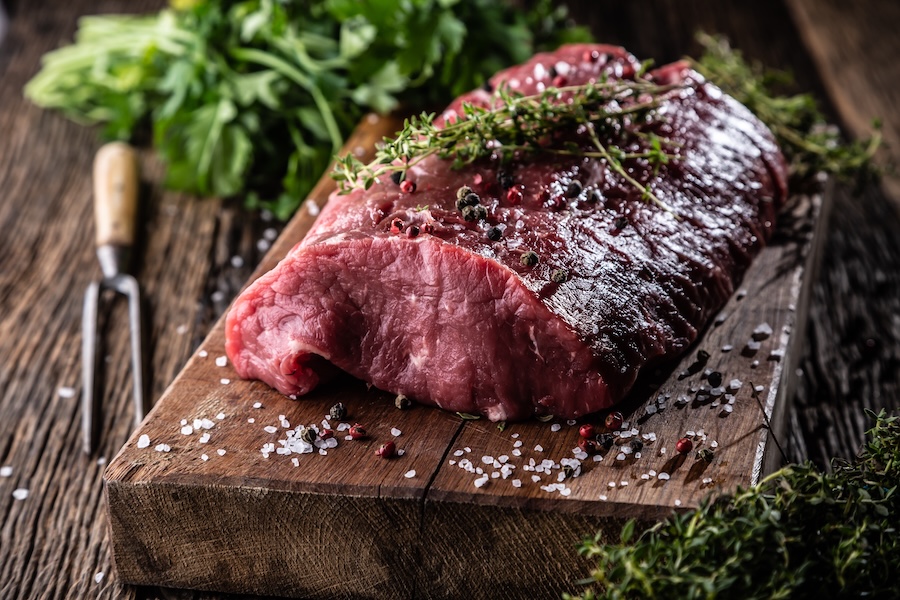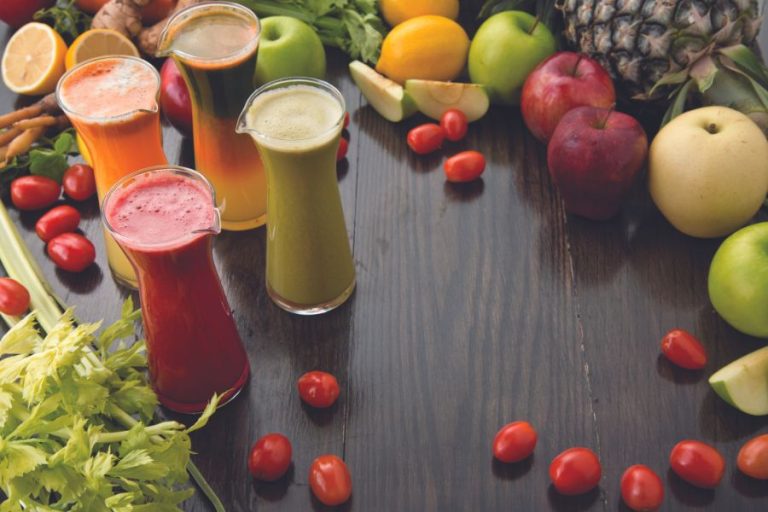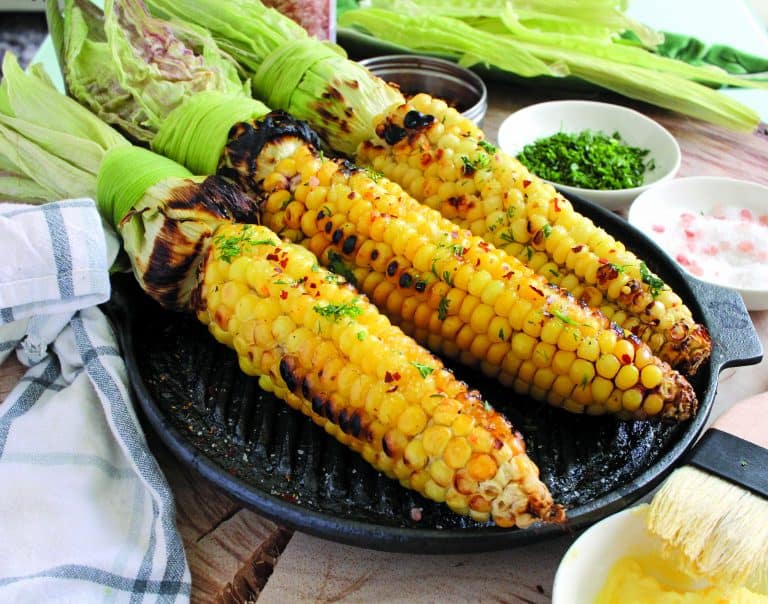How to Cook a Large Roast Perfectly for Tailgates and Crowds
How to cook a large piece of meat
When you’re hosting a tailgate or a big crowd, there’s something undeniably impressive about carving into a perfectly cooked roast. Whether it’s a prime rib, pork shoulder or beef loin, large-format meats are ideal for feeding a hungry group and make for a dramatic, delicious centerpiece. But to pull it off right, especially without overcooking it, you’ll need to follow a few pro tips.
Chef John Huffenberger of Hampton Hall Club has cooked his fair share of big cuts and his go-to method is simple, effective and surprisingly adaptable. It all starts with one word: sear.
“One of my customers asked me about this topic. I think it might’ve been around Christmas time and she was cooking a whole prime rib for her family,” Huffenberger recalls. “She was asking for suggestions and I told her to start at a high heat to try to sear and render some of that fat and crisp up the outside. Then cut the temperature down really low to just kind of low and slow cook it for a few hours.” While this advice came in the context of holiday cooking, Huffenberger confirms: “That’s true for pretty much any large piece of meat.”
So how does this work when cooking for a tailgate or crowd? The method is adaptable to home ovens, smokers or even grills that allow for indirect heat. Here’s the breakdown.
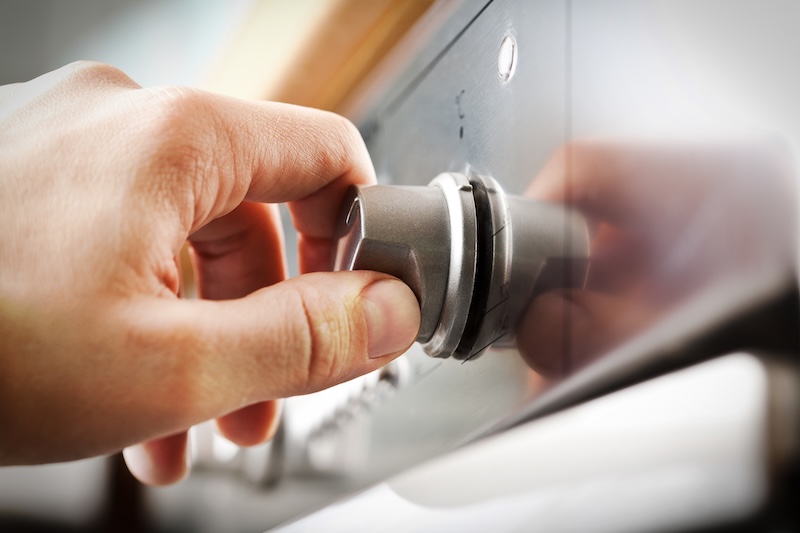
Step 1: Start hot to build flavor
If you’re cooking a large roast, especially something fatty like a rib roast or pork shoulder, it’s essential to begin at a high heat, around 450 degrees. “You can’t fit a whole rib loin in a pan to sear it,” Huffenberger says, “so that’s where you use the oven. Crank it up really high, just to give it a good sear, crisp everything up and render some of the fat out of the outside.” This high-heat blast mimics the pan-sear you’d typically use on smaller cuts and creates that golden crust everyone fights over. It also helps lock in moisture before the slow-cooking phase.
Step 2: Go low and slow
After about 20-30 minutes of high heat (depending on the size of the meat), turn your oven or grill down to 250 degrees. “That’s what I would call low,” Huffenberger explains. Cooking low and slow allows the meat to come up to temperature gently, which ensures a more even doneness and prevents overcooking the outer layers while the center lags behind. This method is especially useful for tailgates or game-day parties where you want to cook a big roast ahead of time and keep it warm. You also can wrap and transport it easily in a cooler lined with towels where it’ll stay hot for hours.
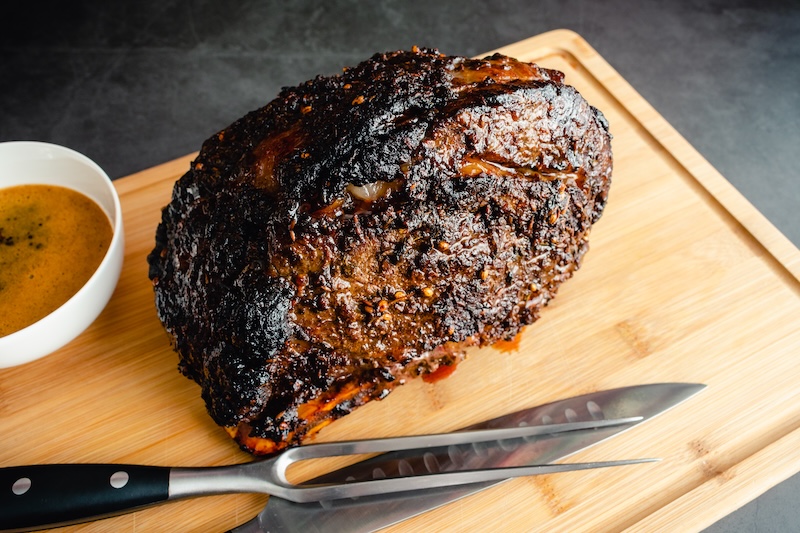
Bonus tips:
- Use the rendered fat: As your meat cooks, baste it with its own rendered fat for added flavor and moisture.
- Use a thermometer: Always go by internal temperature, not time. For example, medium-rare prime rib should be pulled around 125 and rested.
- Rest before slicing: Let the meat sit for at least 20 minutes after cooking to redistribute juices.
- Portable perfection: Sliced roast beef or pork makes fantastic sandwiches, tacos or sliders, ideal for feeding a crowd without the fuss.



